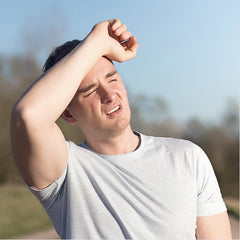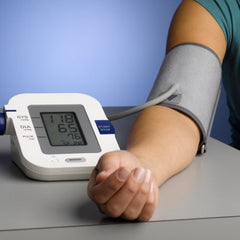Heatstroke Is No Trivial Matter: Understanding the Symptoms and How to Respond
Table of Contents:
Heatstroke, also known as heat illness, refers to a spectrum of clinical symptoms that occur when the body is exposed to high temperatures, high humidity, and poor ventilation for extended periods—particularly in the hot summer months. Under such conditions, the body’s thermoregulatory mechanisms can become disrupted. This, combined with impaired sweat gland function and excessive loss of fluids and electrolytes, prevents the body from effectively dissipating heat, leading to a range of potentially serious health reactions.
People who work outdoors for long hours in hot weather, engage in intense physical activity, or stay in enclosed and stuffy environments are especially prone to developing heat-related illnesses.

Early Signs and Symptoms of Heatstroke
Initial symptoms often include profuse sweating, intense thirst, dizziness, headache, difficulty concentrating, blurred vision, ringing in the ears, chest tightness, palpitations, nausea, and general weakness. Body temperature may remain normal or become slightly elevated. Without prompt intervention, these symptoms can quickly worsen and progress to more severe forms of heat illness, such as heat cramps, heat exhaustion, or even heatstroke—a life-threatening condition.
Certain populations are more vulnerable, including the elderly, children, individuals with chronic illnesses, and outdoor workers. These groups are less tolerant to heat and require extra care and preventive measures.
The Dangers of Heatstroke
Do not underestimate the risks of heatstroke—it can be far more dangerous than many realize. Heat-related illnesses range in severity, but in extreme cases, they can be fatal. Among them, heatstroke is the most serious and deadly form, with a potentially fatality rate as high as 50% if not treated promptly and effectively.
Heatstroke is a medical emergency and is characterized by three hallmark features:
- Hyperthermia – a body temperature exceeding 40°C (104°F),
- An absence of sweating, despite the heat,
- Neurological impairment – confusion, seizures, or even loss of consciousness.
How to Prevent Heatstroke
-
Sunshades and Window Insulation: Install curtains, blinds, or awnings on windows to reduce direct sunlight and lower indoor temperatures.
-
Indoor Cooling: Use air conditioners or electric fans, but avoid setting the AC temperature too low. A difference of 5–8°C (9–14°F) between indoor and outdoor temperatures is generally recommended. Ensure regular ventilation to maintain fresh indoor air.
-
Sun Protection: When going outside, wear wide-brimmed hats and sunglasses, and apply sunscreen to protect your skin from UV damage and help lower the temperature of your head and face.
-
Carry Heat-Relief Items: Bring heat-relief supplies such as electrolyte-replenishing drinks, a personal fan, wet towels, or cooling sprays. Always carry sufficient drinking water.
-
Avoid Going Out During Peak Heat: Try to stay indoors between 10 a.m. and 4 p.m., the hottest part of the day.
-
Limit Activity Duration: Keep outdoor activities short and take breaks every 30 minutes in shaded or cooler areas, hydrating frequently.
What to Do If Someone Has Heatstroke
If you suspect someone is suffering from heatstroke, immediate action is critical:
- Move the person to a cool, well-ventilated area, ideally a room with a temperature between 20–25°C (68–77°F), and have them lie down and rest.
- Remove excess clothing to help the body cool down.
- For mild cases, wipe the body repeatedly with cool water or use cold compresses until body temperature drops below 38°C (100.4°F).
- Use a fan, electric fan, or air conditioning to assist in cooling.
- Provide cool beverages containing salt or a lightly salted solution to help replenish lost fluids and electrolytes.
- The goal is to reduce the patient’s body temperature to a point where they feel cool and comfortable.
With timely and appropriate care, individuals with early or mild forms of heatstroke can typically recover fully at the scene.
FAQs about Heatstroke
How Long Does Heatstroke Last?
Heatstroke symptoms typically begin to improve within 30 minutes after cooling down, but recovery time can vary. In some cases, symptoms may last for several hours or even days. If fatigue or other symptoms persist beyond 48 hours, it’s important to seek medical attention.
Can You Die From Heatstroke?
Yes, heat stroke can be fatal. It occurs when the body’s temperature rises rapidly and it can no longer cool itself down. Without prompt and proper treatment, heat stroke can lead to serious complications such as organ damage, coma, and even death.
Can You Get Heatstroke Indoors?
Yes, you can get heatstroke indoors. Poorly ventilated and hot indoor environments can lead to heatstroke, especially when engaging in physical activity or if you have certain health conditions.
Can Heatstroke Cause Diarrhea?
Yes, heatstroke can cause diarrhea. When the body overheats, the elevated core temperature can damage the gastrointestinal tract, disrupting its normal function. This can lead to inflammation and increased intestinal permeability, resulting in symptoms like diarrhea.
Does Heatstroke Make You Feel Cold?
Yes, heatstroke can sometimes make you feel cold. Although the body’s core temperature is dangerously high during heatstroke, some people may experience chills, cold skin, or a sensation of feeling cold. This happens because heatstroke disrupts the body’s ability to regulate temperature, and cooling mechanisms like sweating may fail, leading to abnormal sensations.
Related Recommendations:
- Surprising Benefits of Regular Stretching! It's Even More Effective Than Brisk Walking in Lowering Blood Pressure
- Brisk Walking: The Best Exercise for Reducing the Risk of Multiple Diseases
- How Many Steps Should You Take Each Day to Protect Your Knee Joints? How to Walk for Better Health?
- Snoring During Sleep: A Potentially Dangerous Warning Sign





